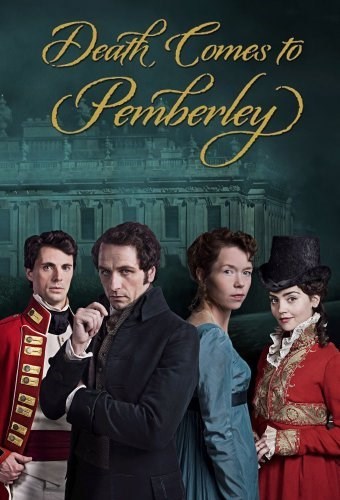
Facing the double-strike of being an adaptation of a novel that would be considered well-written professional fan fiction, Death Comes to Pemberley could have failed miserably. Instead, the BBC miniseries of P.D. James’s 2011 novel of the same name feels every bit as though it belongs in the Jane Austen canon. One could be forgiven for thinking that it was indeed authentic.
This is party due to the BBC’s wonderful ability to bring literature to life. They do their research when it comes to costuming, props, and architecture. They know how to adapt Jane Austen novels and thus they know how to make a story look and feel like a Jane Austen novel. Nothing about this story felt like a modern mystery thriller. There was a bit more angst than there would be in Austen, but it still fit with the characters that she created. The story was a good blend of 20th century relationship analysis amid early 19th century life. Austen’s audiences would have had different expectations than audiences in the 2010s, so the miniseries and its source novel fulfill our expectations, not those of the past.
As for how well the miniseries adapts the novel, I felt that it did an adequate job. There were a few noticeable details that were changed to streamline the plot and keep the cast down – such as only giving the Darcys one young son instead of two. The mystery was kept intact. It has been five years since I read the book, so I will have to reread it to catch any major changes – overall, the plot was the same and the characters every bit as they were in Austen’s Pride and Prejudice, albeit a few years older.
Which brings me to how well the story is a continuation of Austen’s novel. Pride and Prejudice ends fairly happily and there are lots of story threads to follow. Austen basically ties them off and ends her book. In the subsequent years, several writers have penned novels and short stories continuing the lives of the characters. What I enjoy of Death Comes to Pemberley is the format. It is a murder mystery set at Pemberley a few years after the end of Austen’s novel. As such, it is a bit darker in tone, but also features our now mostly-happily married Elizabeth and Mr. Darcy investigating crime and dealing with their married life. It is refreshing to see them work together as a couple. Historical romance tends to sideline the already-married characters, but as a mystery, this story can keep focusing on our favourite pair.
Most importantly, P.D. James strives to write in a style as close to Austen as she could muster. The opening chapter, wherein she basically gives a recount of Austen’s story and the intervening few years following, feels exactly like and early 19th century novel. James finds Austen’s voice and maintains it for the narrative portions of the novel. She also does not take too many liberties with the characters. Even the Darcys, whom we spend the most time with and who are developed the most, still maintain authenticity. Darcy is still preoccupied with duty and honour, balancing that with following his heart; Elizabeth is still headstrong, clever, and kindhearted. They still love each other, but not in an overly obnoxious way. Like many couples, daily life preoccupies them. The mystery has the potential to bring them closer or drive them apart.
In a nutshell, Death Comes to Pemberley is a good sequel because it is both different than its predecessor while maintaining the atmosphere and characters that audiences loved about the original story. Like the author herself, it should appeal to fans of mysteries as well as fans of Jane Austen (or historical romance in general), but particularly those who are fans of both.
- Share





